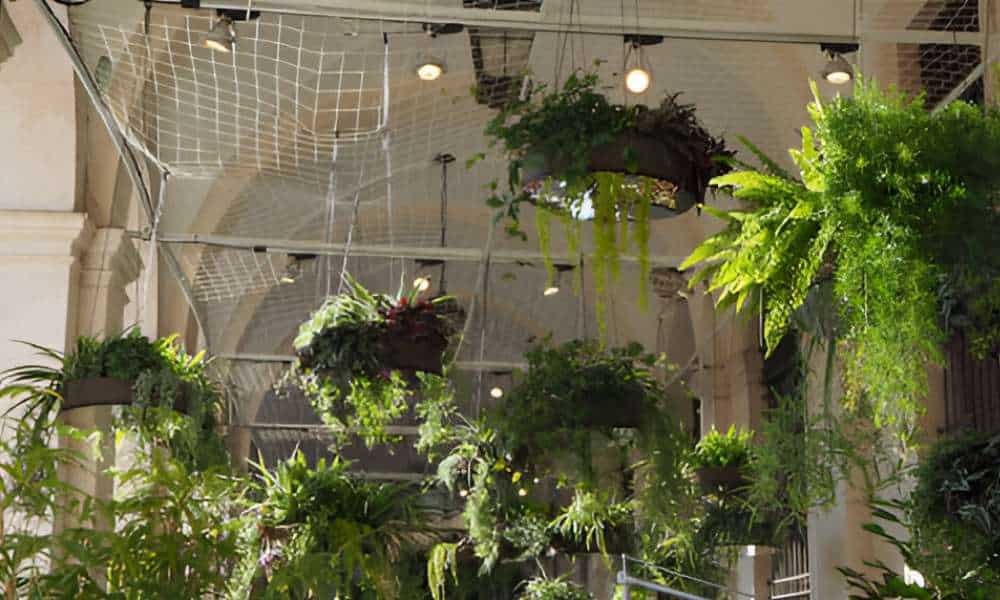I’ve always loved having plants around, but keeping them healthy indoors was a challenge. Even with good sunlight, some plants didn’t thrive. That’s when I learned how to hang grow lights from the ceiling. These lights provide consistent, Bright light, Especially in spaces with little natural sunlight. If you want your plants to flourish, Hanging grow lights for indoor plants is A game-changer. It’s easy to do And makes a big difference in plant health.
Why Hanging Grow Lights Are Essential for Indoor Plants
When I first started growing indoor plants, I didn’t know how important light was. I placed them by the window, But some didn’t grow well. That’s when I learned about hanging grow lights for indoor plants. These lights provide the steady light my plants need, Even when sunlight is limited.
Light is Key for Plant Growth
Plants need light to grow. It helps them make food through a process called photosynthesis. Without enough light, Plants can’t survive. It give them the energy they need, Even when there isn’t enough sunlight.
Benefits of Hanging Grow Lights
In spaces with little natural light, They are a must. They give plants a consistent light source. By hanging them from the ceiling, you ensure the light reaches all your plants. This helps them grow stronger and healthier.
The Science Behind Ceiling Grow Lights
Ceiling grow lights mimic sunlight. They provide the right mix of light that plants need. When set up correctly, They help plants make energy without causing harm. It’s all about providing the best conditions for growth.
Choosing the Right Grow Light for Your Indoor Garden
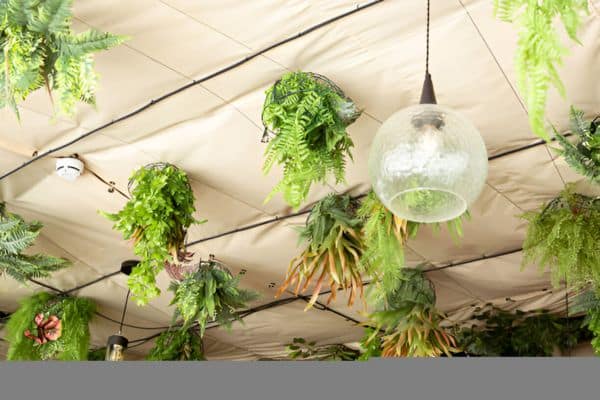
When I first started, I wasn’t sure which one to choose. There are so many types, And it can be tricky. But picking the right grow light is key for plant health. Let’s break it down.
Types of Grow Lights: LED, Fluorescent, and Incandescent
There are three main types: LED, fluorescent, and incandescent. LED lights are the best option. They are energy-efficient and last a long time. They also produce less heat, Which is good for small spaces. Fluorescent lights are a good choice for smaller plants. Incandescent lights should be avoided because they waste energy And get too hot. Hang Light Over Dining Room Table
How to Pick the Right Grow Light
The type of light you choose depends on your plants. If you have large plants, go with LED lights. They provide strong light and are perfect for heavy feeders. For smaller plants like herbs or succulents, Fluorescent lights are a good fit. Always match the light to your plant’s needs to help them grow healthy.
Hanging Grow Lights
Once you choose the correct light, you should hang it appropriately. You can attach it with chains, ropes, or adjustable mounts. I like chains because I can easily adjust the light to the height I want. Ropes also offer flexibility if you’re not committed yet. You have the most control with adjustable mounts. Experiment with different hanging arrangements and see what suits you best.
01. Select the Right Spot
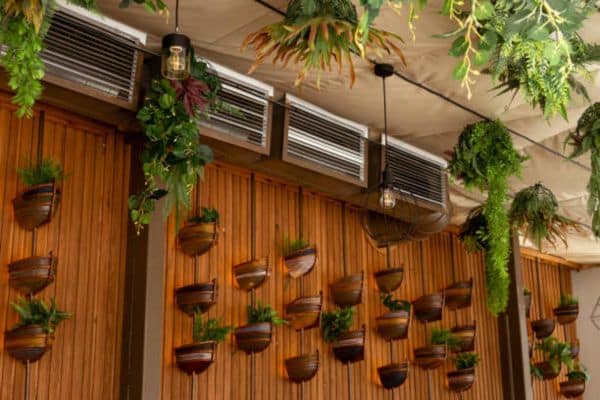
Start by choosing a spot that gets the most light to your plants. Avoid placing the light too close to walls or furniture, where shadows could block it. The light should be centred above your plants to give them even coverage. I usually pick a spot in the middle of the room for better light distribution.
02. Measure the Height and Distance for Proper Light Coverage
Next, measure the height from the plants to the light. Most plants do best when the light is 12-24 inches above them. Too close, and you risk burning them. Too far, and they won’t get enough light. I find it helpful to start with the light a little higher and gradually lower it based on how the plants react.
03. Install Mounting Hardware (Hooks, Brackets, or Rails)
Now, install your mounting hardware. You can use hooks, Brackets, or rails, Depending on the type of light. I like ceiling hooks because they’re easy to install and very secure. Just make sure to use anchors if you’re hanging it from drywall.
04. Hang the Light and Adjust for Optimal Distance from Plants
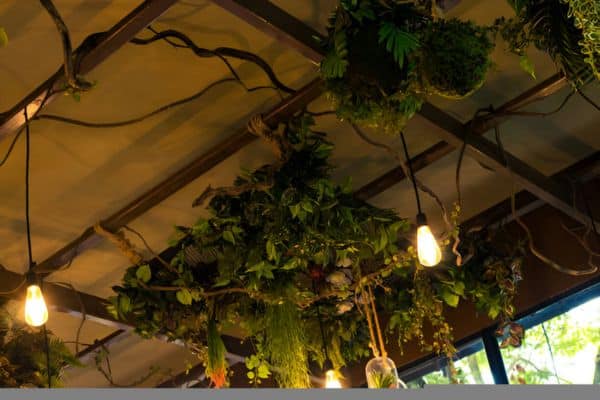
Once the hardware is in place, hang your light and adjust the height. You’ll want it high enough to cover your plants evenly, but not so high that it doesn’t provide enough light. I always double-check to make sure the light is level to avoid uneven growth.
05. Plug In and Test the Setup for Light Intensity and Coverage
Finally, plug in your grow light and turn it on. Take a step back and check how the light looks. You should see your plants getting enough light, but not showing signs of stress like curling leaves. Adjust if needed to find the perfect balance.
Tips for Properly Hanging and Using Grow Lights
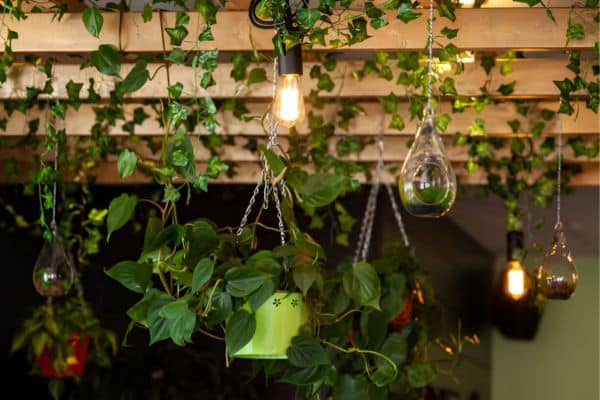
Once you hang your grow light, the next step is getting it in just the right spot. This is how strong and healthy plants grow. Here are some pieces of advice to help you get it right.
Proper Distance Between the Light and Plants
The distance between your grow light and plants matters. If the light is too close, it can burn your plants. If it’s too far, they won’t get enough light. I keep my light 12-24 inches above my plants. This distance works for most plants, but I adjust it based on how they look.
How to Hang a Grow Light Based on Plant Types
Different plants need different amounts of light. Short plants, like herbs, need less light, so I hang the light higher. For tall plants, I hang the light closer. Adjust the light based on each plant’s size and needs to help them thrive.
Using Adjustable Hanging Systems
If you have a height-adjustable grow light, utilize it! And adjustable mounts, chains or ropes allow you to easily change the height of the light. As your plants get taller, you can simply move the light up or down to provide the perfect amount of light. This does make it easier to give the best growing conditions.
Troubleshooting Common Issues
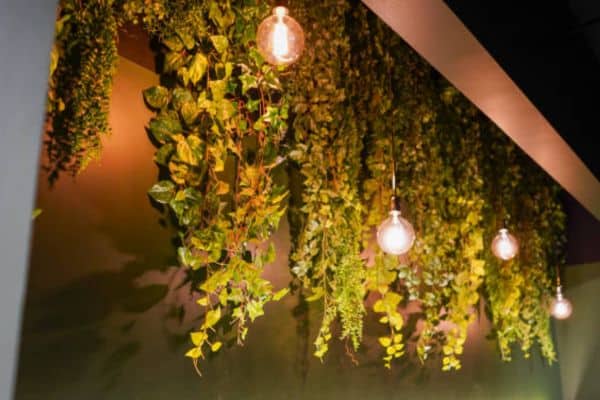
Even with a good setup, Problems can happen. Don’t worry—most of these are easy to fix. Here’s how to handle some common issues.
Light Too Close or Too Far from Plants—How to Adjust
If the light is too close, it can burn your plants. If it’s too far, they won’t get enough light. The fix is simple: adjust the height. I keep my lights 12-24 inches from the plants. If the leaves burn, raise the light. If plants stretch too much, lower them a bit.
Solving Common Problems Like Heat Build-Up or Uneven Light Distribution
If your light gets too hot, move it farther away. You can also use a fan to cool it down. For uneven light, check the light’s placement. If it’s off-centre, adjust the height or angle so all plants get equal light. These small changes can make a big difference.
Maintenance and Best Practices for Long-Term Grow Light Setup
To keep your lights running smoothly, regular care is key. Cleaning your lights and using them efficiently will help your plants grow strong while saving energy. Here’s how you can maintain your lights for the long haul.
How to Clean and Maintain the Lights for Maximum Efficiency
Dust and dirt can block light and reduce its efficiency. Wipe your lights regularly with a soft cloth. I clean mine once a month to keep them bright and effective. If you use LED lights, follow the care instructions from the manufacturer to make them last longer.
Tips on Energy-Saving Practices with Ceiling Grow Light Setups
It use a lot of power, but you can save energy. Use LED lights, which are more efficient. You can also adjust the light height as your plants grow to avoid wasting energy. Turning off the lights at night or when not needed helps reduce electricity use. These simple steps save energy and lower bills.
Importance of Timing and Using Timers for Light Cycles
Plants like a consistent schedule of light. Establish regular light cycles with a timer. Obviously you’re going to need 12-16 hours of light per day. You want the light on when it should be on, and off when it shouldn’t. A timer makes this happen. This adjusts your plants to ensure it stays that way and without any extra work from you.
Conclusion
Hanging grow lights from ceiling is simple and effective way to keep your plants growing. It gives them the light they require even in places that receive scant sun. This uncomplicated arrangement keeps plants healthy and strong.
If you are unused to riding with lights on your arms, give it a try. It’s an easy solution for brighter, healthier plants.
The last pays off over time. They enhance plant growth and contribute to the efficiency of your system. Small changes, such as height adjustments, can have a big impact. Give it a go, and see your plants conquer!


